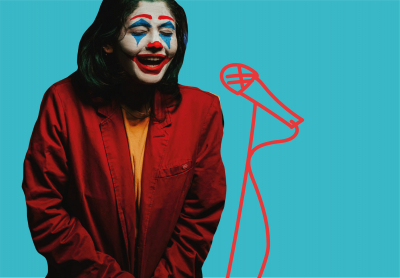Present Simple and Present Continuous Rules

About course
Basic grammar rules are your foundation for sophisticated and advanced English. Say it simply and clearly if you want to be heard and understood. Without a full understanding of Present Simple and Present Continuous, it isn't easy to learn more complex grammar. This course will help you learn the most essential, basic rules you will use in every second sentence.
The course will teach you how to build sentences in the Present Simple and Present Continuous, ask questions, what the exceptions are, and how to use these tenses correctly.
booyya - beautiful English consists of simple things
-
Level: Beginner
-
25 minutes
- 1 lesson
-
12 tasks
-
Teacher's language: English
-
Interactive exercises
-
Video
-
Tests
Course program
1 LESSON
Berta's day. Reading
A comic art story and a presentation of grammar
Tasks
Rules, tables and tasks
Bonus
Grammar rules in tables that can be downloaded
Who is this course for
For the beginner level, if you already understand the verb to be, then it's time to understand the Present Simple and Present Continuous.
For those who missed or did not understand the topic of Present Simple and Present Continuous.
This course will help you if you have studied this grammar before but need to remember and repeat it.
The course is for teachers and tutors as it is a ready-made lesson on Present Simple and Present Continuous with a well-developed presentation of the material, tables and interactive exercises.
What will you get after the course
You will get a base, a foundation for your English. You will learn and practice the Present Simple and Present Continuous rules, which you will constantly use in your speech.
-
Level: Beginner
-
25 minutes
- 1 lesson
-
12 tasks
-
Teacher's language: English
-
Interactive exercises
-
Video
-
Tests
Present Simple and Present Continuous are two English grammar tenses that can be used to describe actions in the present.
The first one is used to describe an action that is repeated with a certain regularity, for example, “I play tennis every Saturday''.
The second one indicates a continuous action or an action that is happening right now, at the moment of speaking, for example, “I'm playing tennis right now”.
However, this is just the basic information you need to remember about these two tenses. To learn how to use them correctly, you need to understand the grammatical differences. Booyya is here to help!
Where the difference between Present Simple and Present Continuous lies
The difference can be seen in the rules for the formation of each of the tenses, which you must remember:
-
Present Simple = Subject (noun/pronoun) + Verb (if the action is performed by the third person singular (he, she, it), add the ending -s/-es to the verb):
My cat likes fresh fish.
-
Present Continuous = Subject (noun/pronoun) + to be in the appropriate form (am, is, are) + Verb -ing:
I'm watching a movie now.
The usage of these tenses
Present Simple is used to tell about:
-
someone's habits or preferences that are unchangeable;
-
repetitive actions, such as daily routine;
-
known truths and general statements related to specific facts, such as the color of spring grass or the size of the sun;
-
timetables and schedules of buses, trains, planes etc.;
-
directions or instructions for actions with an imperative tone, such as cooking recipes;
-
retellings of stories, for example in sports reports or news articles;
-
titles of books, news articles, and online publications.
Present Continuous can be used to describe an action that is happening:
-
right now (or two simultaneous events);
-
around now (when we say that we are looking for a job, we are probably not looking for a job at the moment of speaking, but we have done it before and will continue to do so later);
-
in the near future, but with arrangements that involve adherence to a specific time (“We are meeting next Thursday”);
-
now, but the action indicates a trend (“Modern couples are being responsible about having children nowadays”);
-
continuously and it annoys us or makes us angry (“You are interrupting me all the time!”).
Negative sentences
To communicate, we need to know more than just the rules for creating affirmative sentences in these two grammar tenses.
So remember that to express negation in Present Simple, you need to use the auxiliary verb “do” / “does” and the negative particle “not”:
-
I don't play computer games.
-
They don't run in the morning.
To form a negative sentence in Present Continuous, you need to add the particle “not” to the form of the verb “to be”:
-
She isn't studying biology now.
-
I'm not looking for a relationship right now.
Interrogative sentences
The formation of interrogative sentences in these two grammar tenses follows similar principles. A special interrogative word or auxiliary verb should be used in front of the subject (pronoun/noun). For Present Simple, it's “do” / “does”, and for Present Continuous, it's “to be” in the correct form according to the person.
Here are some examples of interrogative sentences in Present Simple:
-
Who can play the piano?
-
Does she work out at the gym every day?
These are the examples of interrogative sentences in Present Continuous:
-
Are they walking down the street?
-
What is he doing right now?
Table of differences between Present Simple and Present Continuous
To help you remember this information and understand the difference between these tenses better, we have prepared a summary table:
|
Present Simple |
Present Continuous |
|
|
Feature of the action |
Regular or constant, stable fact, schedule, daily routine |
Temporary, happening right now or around now |
|
Marker words to recognise the tense |
|
|
|
Verb form |
First, with the third person singular, use the ending -s/-es |
Form of the verb “to be” + main verb-ing |
|
Forming a negative sentence |
Add the negative particle “not” after the auxiliary verb “do” / “does” |
Add the negative particle “not” after the form of “to be” |
|
Forming an interrogative sentence |
Put “do” / “does” at the beginning of a sentence, before subject |
Put the form of “to be” at the beginning of a sentence, before subject |
How to memorize all the rules for using tenses quickly and effectively
It‘s important to have an interesting and clear grammar at hand, such as the courses on the Booyya platform. For example, our beginner's course, which consists of only one lesson, will help you to get acquainted with the tenses. However, this lesson is very deep and meaningful:
-
theoretical material is presented in the form of a comic;
-
all the grammar on the topic is collected in a convenient presentation;
-
exercises can be completed online;
-
there are some tables for revision.
The course is available on our online platform. It’s an interactive textbook that contains interesting videos and pictures in addition to the text. You can also complete exercises in the textbook, which makes the learning process convenient and effective. Although the language of the course teacher is English, it is adapted to a beginner's level.
- access to all 209 English courses on the platform, except for the English PRO series
- 2 - 4 new courses every month
- exclusive access to SUBSCRIPTION ONLY courses
- access to the Smarte+ - smart online tool for English practice
- unlimited studying for the selected period
- access to self-study English plans







































